Company History: Journey through time
For 125 years we stood for the highest levels of quality in the supply of pharmaceutical products and thus make an important contribution to people's health.
Use the arrows to scroll left or right through the timeline.
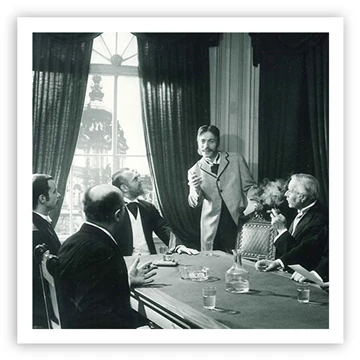
1895 to 1933
1895 to 1933
Forward-looking pharmacists join forces in order to achieve more together. A pharmacist association is also founded in Dresden. This marked the birth of STADA. Certain preparations are produced according to identical guidelines, they are uniformly packaged and sold everywhere at the same price.

1895
1895
STADA's story begins: According to pharmacy historians, STADA's zero hour is March 14, 1895. Forward-looking pharmacists team up to economically produce joint preparations. This gives rise to joint preparations being produced in participating pharmacies for example, in Berlin, Dresden, Würzburg, Darmstadt and elsewhere, initially in very small circles. A pharmacist association is also founded in Dresden. This is where STADA has its roots. From these beginnings, similar organizations then begin to develop on a larger scale.
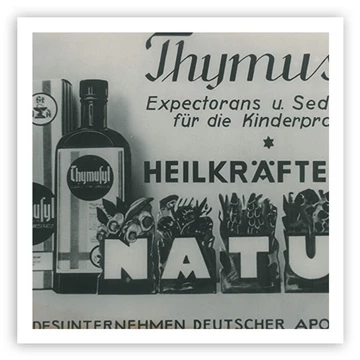
1903
1903
The German Pharmacists Association regulates the self-production of pharmaceutical specialties, from production to packaging and labeling to price.
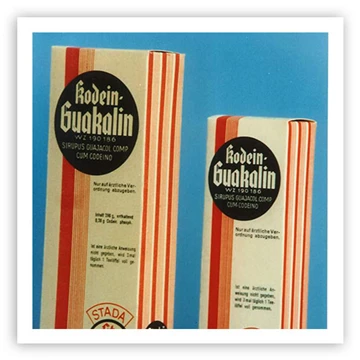
1908
1908
This leads in 1908 to the founding of the German Pharmacists Association's specialty company. This gives its members the possibility of producing certain preparations in accordance with identical guidelines. These preparations are uniformly packaged and sold at the same price everywhere.
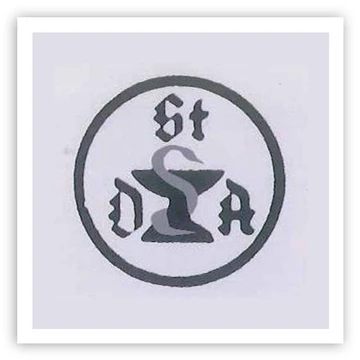
1933
1933
In the wake of the political co-ordination of regional specialist companies and pharmacists associations, in 1933, with the transfer of the German Pharmacists Association to the Professional Community of German Pharmacists (St.d.A), the German Pharmacist Association's specialist company is changed to the German Pharmacist Association's own preparations department.
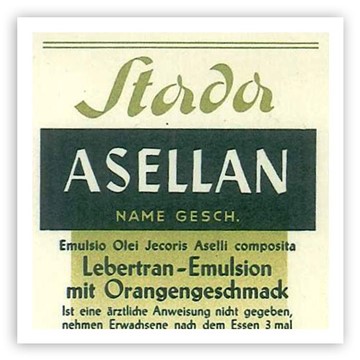
1933 to 1948
1933 to 1948
After the Second World War, the term "STADA" becomes an association trademark. The company is divided into two cooperatives - North and South. The focus is on products for self-medication.

1935
1935
The abbreviation "St.d.A." becomes the association mark "STADA"(registered trademark) and soon develops into a generic term for all preparations produced in house by the pharmacy in accordance with standard formulations. At that time, STADA developed a wealth of activities focusing on recovering the formula linked to a scientific revaluation of the pharmacy. For this purpose, the Institute for Pharmaceuticals was established at the German Museum of Hygiene in Dresden, where, in addition to the ongoing monitoring of STADA preparations, new regulations and processes were developed.
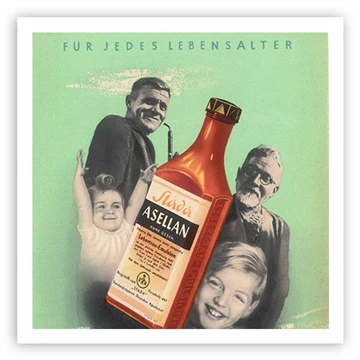
1938
1938
In 1938 STADA opens a branch in Munich, which falls victim to the bombing attacks of 1944. STADA's offices are then moved to Halle an der Saale. At the end of the war, STADA's work comes to a halt, as Halle is located in the Soviet occupied zone.
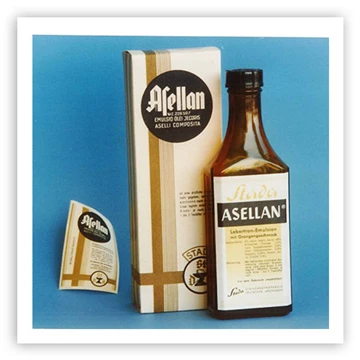
1948
1948
After the war, STADA is newly founded in 1948 in two separate cooperatives in the territory of the former Federal Republic of Germany. After this, in northern Germany, there is then STADA North headquartered in Essen and, in southern Germany, STADA South based in Tübingen. Business operations are focused on self-medication products.
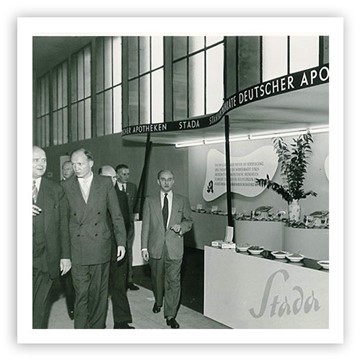
1948 to 1961
1948 to 1961
The two cooperatives that emerged after the end of the war, STADA North and STADA South, merge in 1954 to become one company: STADA GmbH, which is headquartered in Frankfurt am Main. The suitable location in Bad Vilbel/ Dortelweil then provides the capacity for the planned expansion. The first step as a manufacturing company follows.
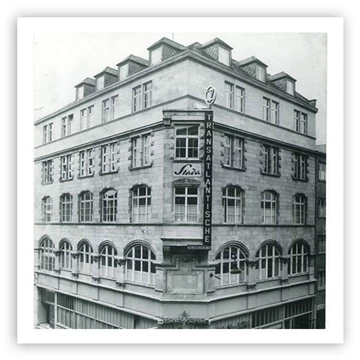
1954
1954
These two organizations merge in 1954 to become one company, "Stada, Standardpräparate Deutscher Apotheken" eGmbH which relocates to Frankfurt am Main. In addition, the trade mark "STADA" is registered.
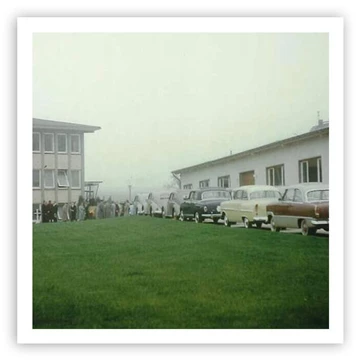
1957
1957
As the company is expanding, premises are acquired just outside of Frankfurt in Bad Vilbel Dortelweil, where, initially on a small scale, new buildings are built for offices and storage. Here, over the course of the next few years, a modern pharmaceutical operation comes into being.
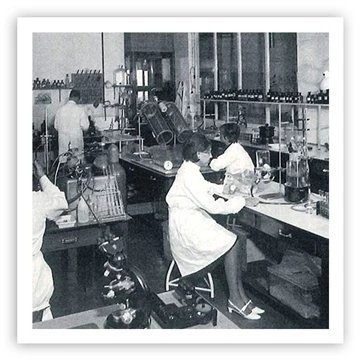
1961
1961
STADA's representative assembly decides that STADA medicines no longer need to be made exclusively in the pharmacies, but can also be produced centrally in Dortelweil.
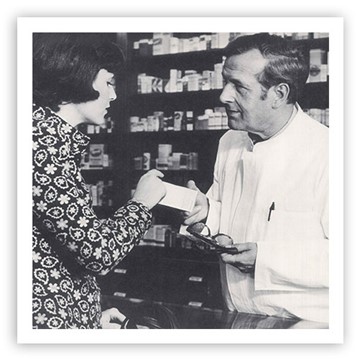
1961 to 1975
1961 to 1975
1961 in accordance with the decision of the representatives, STADA's own preparations are traded as wholesale for the first time. The cooperative becomes a limited company - for pharmacists only. The close relationship with the pharmacists remains. The foundations for a modern industrial company are laid. 1975 the decision is made to expand the range to generics.
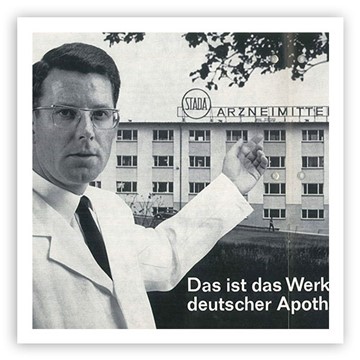
1970
1970
At the beginning of 1970, STADA changes the existing legal structure. The co-operative becomes a corporation, in order to raise larger amounts of capital and to remain sustainable. At this point however, shares may only be purchased by pharmacists.
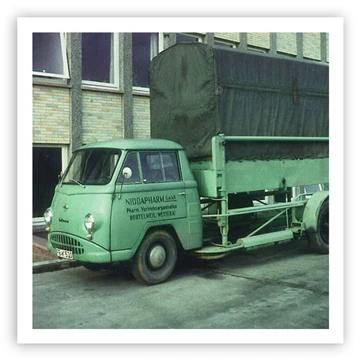
1971
1971
Two further companies connected to STADA are founded: NIDDAPHARM GmbH and STADA-CHEMIE GmbH. STADA also purchases the company UZARA-Werk GmbH.
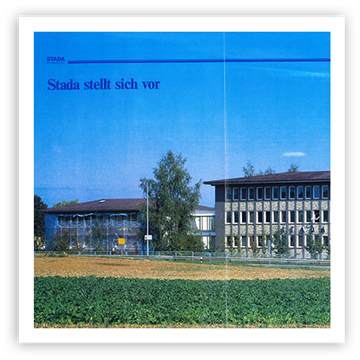
1975 to 1993
1975 to 1993
The ambitious goal and associated challenge of developing and producing generics, was the right decision for STADA. The following years are marked by restructuring and rapid growth. STADA expands into international markets. 1993 non-pharmacists may also purchase STADA shares.
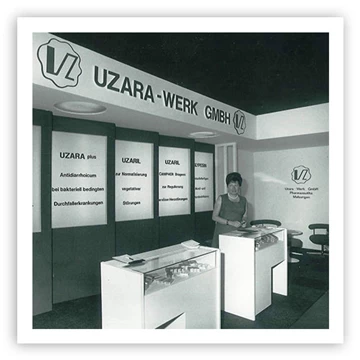
1975
1975
In 1975, STADA decides to expand its own product line with so-called generics and establishes STADAPHARM GmbH. The first licenses are obtained. One of the greatest generic successes is Nifedipin STADA®.
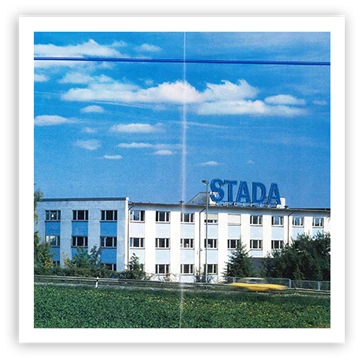
1986
1986
First foreign investments: With the acquisition of Swiss Helvepharm AG, STADA is active abroad for the time. In 1989 this is then followed by the establishment of the STADA GmbH Austria, and in 1990/91, the acquisition of Eurogenerics SA in Belgium and Centrafarm BV in the Netherlands.
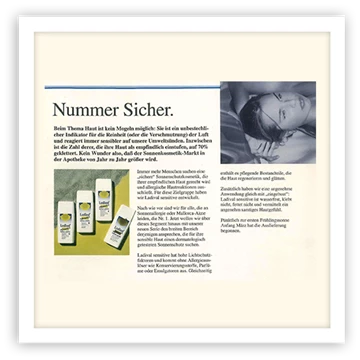
1992
1992
STADA begins its business activities in Asia with STADA Pharmaceuticals (Asia) Ltd. in Hong Kong.

1993 to 2000
1993 to 2000
On its 100th birthday, business is booming. The company ranks "top ten" in the German industry according to sales. 1997/1998 the IPO follows. The company's core competencies are the two segments of generics and OTC products. STADA continues to consistently pursue its internationalization strategy and develops into a dynamic global player.

1993
1993
Opening for non-pharmacists: For the first time, non-pharmacists can also become STADA shareholders, alongside pharmacists and company employees.

1995
1995
Reorganization of STADA into a medium-sized holding: The holding company headquartered in Bad Vilbel, remains responsible for all pharmaceutical research, production, certification and quality assurance duties. Two German subsidiaries, STADAPharm GmbH and the new STADA OTC Arzneimittel GmbH, take over the company's core business, the marketing of prescription medication and preparations for self-medication. The establishment of the holding company and the two GmbH companies is the logical evolution of the previous generics and OTC strategy.

1996
1996
Acquisition of ALIUD PHARMA GmbH as a generic second-line in Germany as well as expansion into France (EG Laboratories EuroGenerics S.A.) and the Czech Republic (ALIUD PHARMA CZ s.r.o.).
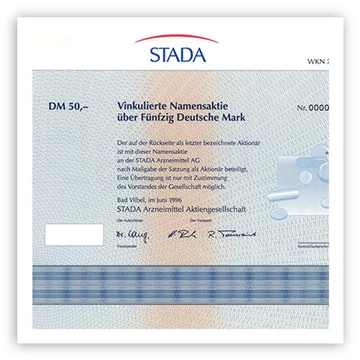
1997
1997
Start of the IPO with non-voting preference shares. On 29 October 1997 STADA shares are listed for the first time for official trading on the stock exchanges in Frankfurt and Dusseldorf.

1998
1998
Closing of the IPO with registered shares. Acquisition in Denmark (PharmaCoDane Aps) and alignment as comprehensive provider in the healthcare market with the acquisition of Onkologika (cell pharm Gesellschaft für pharmazeutische und diagnostische Präparate mbH) and a product package of prescription brands from Fresenius.

1999
1999
STADA's internationalization continues apace: launch of STADA Asiatic Co. Inc., Bangkok, investment in Spain in Ciclum Farma SA, Madrid and launch of EG S.p.A, Milan in Italy.

2000
2000
Purchase of Clonmel Healthcare Ltd., the market leader in the Irish generics market. 1:10 stock split of ordinary and preference shares.
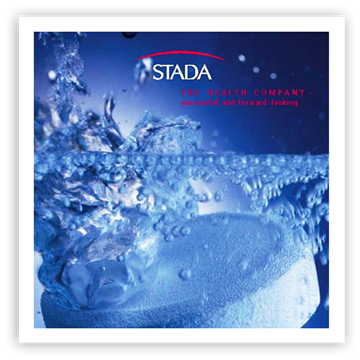
2000 to 2005
2000 to 2005
In 2001, STADA shares are included in the MDAX and in 2002 in the Euro Stoxx 600. Various capital measures are carried out. STADA begins developing biogenerics. Internationalization progresses. 2004 the strategically important entry into the Russian market takes place with the purchase of the pharmaceutical company Nizhpharm.

2001
2001
Launch of biogenerics development, involving private venture capital. STADA expands its Asian business with two acquisitions: Acquisition of Croma Medic Ltd. in the Philippines and Hong Kong-based Health Vision Enterprise Ltd. The 500 million euro revenue threshold is surpassed. Conversion of preference shares into ordinary shares and inclusion in the MDAX.

2002
2002
Launch in the US with the sales company STADA Inc. after taking over the business operations of the US generics supplier MOVA Laboratories Inc., Cranbury, New Jersey. STADA increases its share of the Spanish brand supplier Ciclum Farma SA, Madrid, to 100%. Acquisition of the second largest Spanish generics supplier Bayvit SA. Acquisition of marketing and sales activities of the Italian pharmaceutical company Crinos SpA, Milan. Purchase of numerous local branded products. Inclusion in the stock market index EuroSTOXX 600.
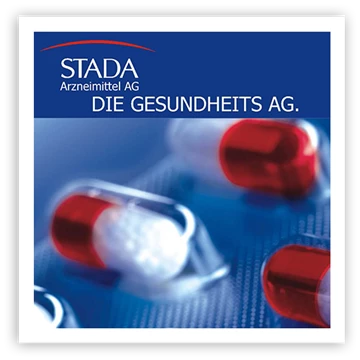
2003
2003
(60%) investment in the Italian New Pharmajani SpA (NPA), Milan, a sales specialist in the pharmacy area. The Europa Fachhochschule Fresenius (EFF) and STADA announce the setup of the STADA "health management" foundation professorship. Acquisition of English generics supplier Schein Pharmaceuticals UK Ltd, Newbury with the generics sales line Genus Pharmaceuticals. Acquisition of a package of brand products from redinomedica AG for the German OTC market.
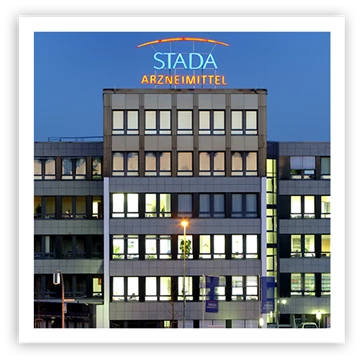
2004
2004
De facto stock split 1:1. STADA acquires a portfolio of branded products in Italy to strengthen the local Italian STADA sales companies. With the acquisition of an approximately 97.5% stake in the Russian pharmaceutical company Nizhpharm OJSC, STADA makes an important strategic step towards expanding its business in Russia.
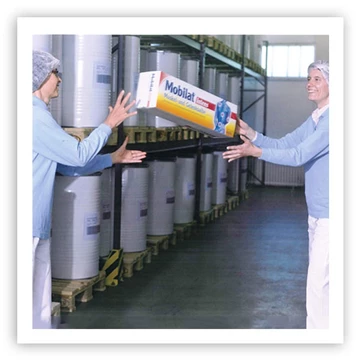
2005
2005
Acquisition of the Portuguese generics supplier Ciclum Farma, Unipessoal, LDA. STADA acquires a 58% stake in the Chinese pharmaceuticals manufacturer Beijing Center-Lab Pharmaceutical Company Ltd. (BCP). Purchase of a package of eleven European branded products (including Mobilat®) from the SANKYO PHARMA Europe Group.
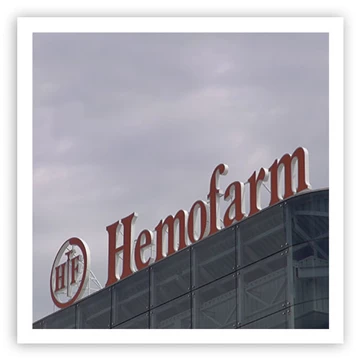
2005 to 2010
2005 to 2010
STADA takes over the Serbian company Hemofarm AG which is strategically important for the Group. The German STADA subsidiary cell pharm introduces the Group's first biosimilar. STADA successfully places its first corporate bond. STADA begins with the Group-wide cost efficiency program "STADA - build the future".
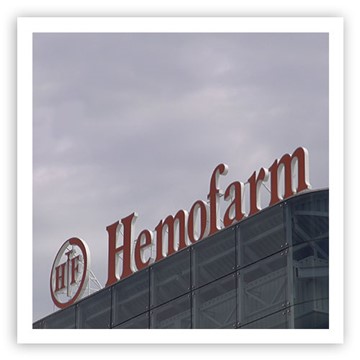
2006
2006
Exit from US business due to limited operational capacity of the existing business structures and high price and margin pressures in the US generics market. Acquisition of the Serbian Hemofarm A.D., Vrsac.
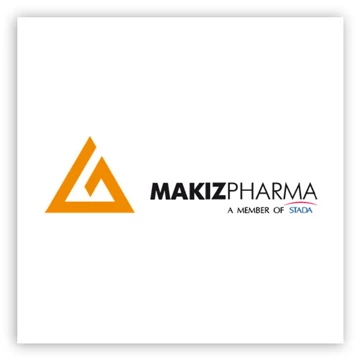
2007
2007
STADA considers Russia an important growth market and therefore acquires the Russian MAKIZ Group, one of the fastest growing suppliers in the Russian pharmaceutical market. STADA also buys the British pharmaceutical group Forum Bioscience Holdings Ltd.
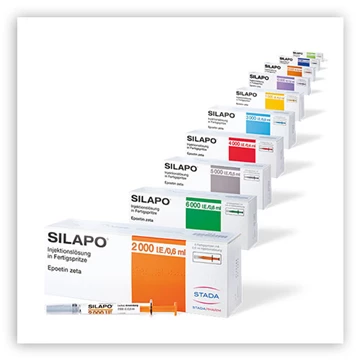
2008
2008
The company's own sales company cell pharm Gesellschaft für pharmazeutische und diagnostische Präparate mbH introduces the Group's first biosimilar for the treatment of anemia due to chronic kidney failure and chemotherapy. In Germany, the preparation is marketed under the brand name Silapo®.

2010
2010
Successful placement of the first corporate bond. STADA decides to implement the Group-wide cost efficiency program "STADA - build the future" and begins with the implementation of the first measures.
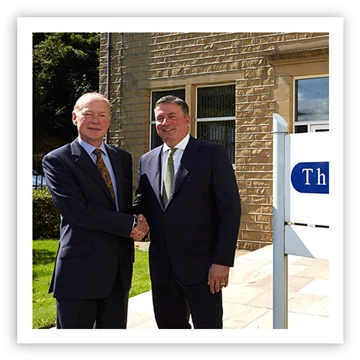
2010 to 2015
2010 to 2018
STADA makes successful acquisitions in the branded product area which is becoming increasingly important for the Group. The Group-wide cost efficiency program "STADA - build the future" is successfully completed ahead of schedule. STADA purchases British OTC manufacturer Thornton & Ross.
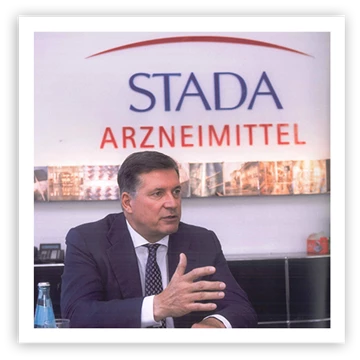
2011
2011
Acquisition of the British branded product Cetraben®. STADA enters into a collaboration with Gedeon Richter Plc. for the development of two biosimilar products for the monoclonal antibody Rituximab and Trastuzumab. Purchase of one of Grünenthal GmbH's brand product portfolios for Eastern Europe and the Middle East.
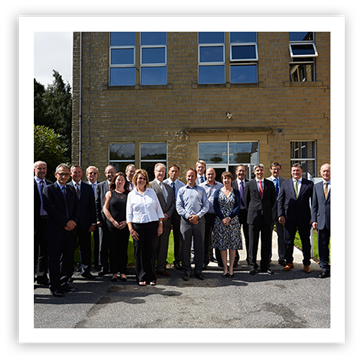
2012
2012
Purchase of one of Grünenthal GmbH's branded product portfolios for the EU markets in Central Europe. Acquisition of Spirig Pharma AG, Egerkingen, a Swiss pharmaceutical company. Establishment of a subsidiary in Australia. As part of the Group-wide cost efficiency program "STADA - build the future", introduced in 2010, STADA sells the Irish production facility STADA Production Ireland Limited as well as the two Russian production facilities OOO Makiz Pharma, Moscow, and OOO Skopin Pharmaceutical Plant, Ryazanskaya obl.
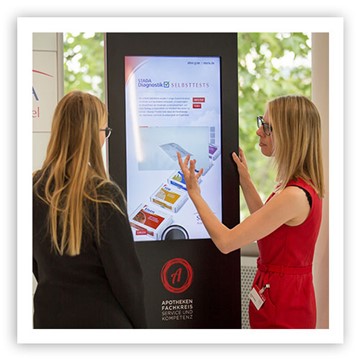
2013
2013
Entry into personalized drug therapy with "STADA diagnostics". First pharmaceutical company in Germany to introduce a 2D barcode. Acquisition of the British OTC provider Thornton & Ross Ltd, the number five in the UK OTC market. Establishment of an IT shared service center in Serbia to group the STADA Group's IT services. Expansion of the biosimilar offering with the licensing of the filgrastim preparation Grastofil®. STADA also expands its operations to Myanmar. Successful placement of the second corporate bond.

2014
2014
Successful launch of new sales company STADAvita GmbH in Germany. Establishment of a logistics and distribution center in Dubai. STADA exceeds two-billion-euro mark in sales for the first time. Strengthening of the branded product portfolio with the acquisition of the Russian branded product portfolio Aqualor® for self-medication of sinusitis and sore throats as well as the rights to Flexitol®, a dermatological series in the hand and foot care industry for Britain and Ireland.
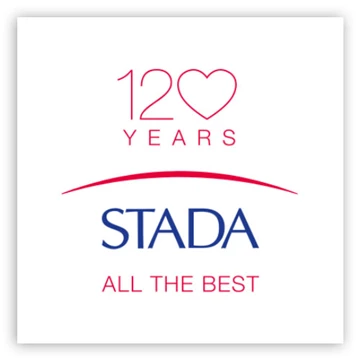
2015
2015
STADA is celebrating its 120-year anniversary. Expansion of the STADA Diagnostik product line with a device-independent rapid test for Ebola. Expansion of the biosimilar portfolio with the in-licensing of Pegfilgrastim for marketing in Europe. Purchase of the Austrian SCIOTEC Diagnostic Technologies to strengthen the branded products portfolio. With the purchase of the Argentinean generics producer Laboratorio Vannier, STADA has secured market entry in an emerging country with major growth potential. A cooperation with CROMA-PHARMA has strengthened the aesthetics area of STADA and secured access to botulinum toxin in the medium-term.
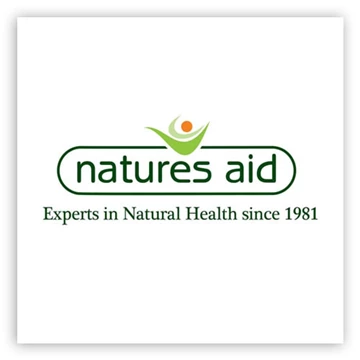
2016
2016
Start of focused internationalization of successful Branded Products
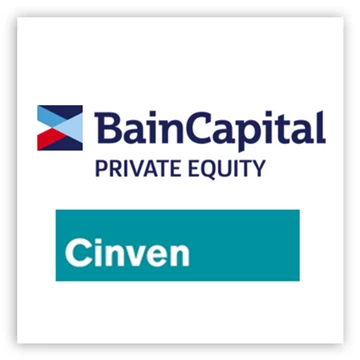
2017
2017
Successful voluntary public takeover offer by Bain Capital and Cinven; shareholding of ∼ 65%
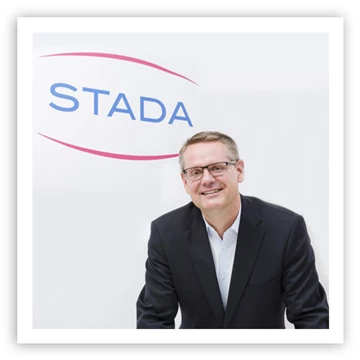
2018
2018
STADA is able to push ahead with the strategic portfolio expansion in important areas: repurchase of the rights to the sunscreen Ladival; acquisition of the EMEA rights to the worldwide anti-dandruff brand Nizoral; becoming majority shareholder of BIOCEUTICALS Arzneimittel AG, which created an excellent basis for growth in biosimilars. In September, Peter Goldschmidt becomes CEO and starts a focused corporate culture process; Announcement of delisting.
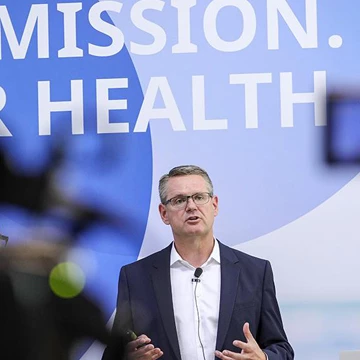
2019
2019
Acquisition of five skin care brands and one pediatric cough remedy from GSK; launch of anti-cancer drug Bortezomib in 14 European countries as the first generic and innovative ready-to-use injection solution; sales start of anti-dandruff brand Nizoral in Germany, Portugal, Ireland & UK; launch of first generic of cytostatic drug Pemetrexed in Germany as a ready-to-use concentrate

